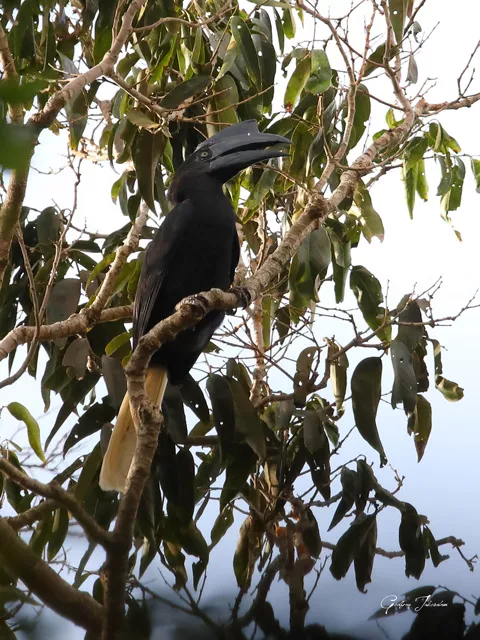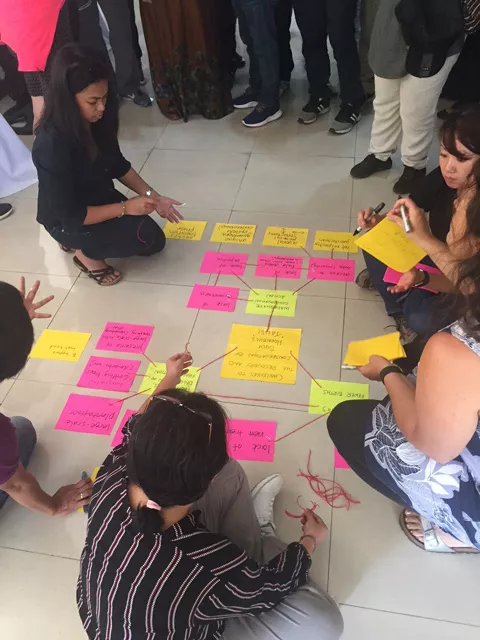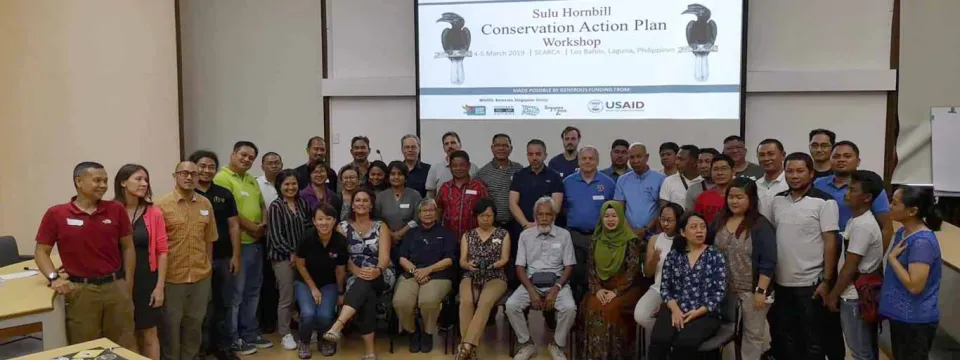Written by Roger Sweeney, Director of Animal Management & Welfare
The Sulu hornbill (Anthracoceros montani) is one of the world's most endangered bird species. It’s listed as critically endangered on the International Union for Conservation of Nature Red List (IUCN); the IUCN is regarded as the global authority on the status of the natural world and the measures needed to safeguard it.
The hornbills’ population is fewer than 40 individuals and is nowadays restricted to a single island of Tawi-Tawi, in the Sulu archipelago of the Philippines This species has always had a geographically restricted range and recent field reports suggest that it may now persist within only 40% of its original distribution range.

Sulu hornbill
Historically this region has been difficult to visit and conduct research in because of political unrest, but in recent years some level of political resolution has come through legislation creating the Bangsamoro Autonomous Muslim Region that covers Tawi-Tawi. During the period that the island has been isolated from biological research, ongoing threats from illegal logging and mining operations have shrunk the natural range of the hornbill, with a correlated population decline. Given the urgent conservation needs for this species, the IUCN Species Survival Commission (SSC) Hornbill Specialist Group partnered with the IUCN SSC Conservation Planning Specialist Group and numerous Philippine government and non-government organizations to hold a species conservation planning workshop for the Sulu hornbill. This workshop, held in March 2019, involved 44 participants from 23 organizations and resulted in the development of the Sulu Hornbill Conservation Strategy and Action Plan for the next 10 years.-
The workshop brought a diverse group of participants together through a science-based process of defining a future vision of success. The group shared knowledge about the Sulu hornbill, its ecological requirements and the current habitat status, and designing actions to help reduce Identified threats The group evaluated each possible conservation action and set a timeline for implementation, defining which partners need to be involved to ensure the access for each potential conservation action that was identified.
During the workshop different sub-groups were formed to focus upon habitat & species issues, community engagement, governance, land issues and security, and the potential for ex situ (offsite) management. All of this work was brought together into the final plan that covered all of these areas in one holistic conservation strategy and action plan. It was a very impactful process to be a participant in and gave everyone involved a deeper insight into the challenges this species faces and the scope of work that will be needed to ensure its survival.

Group exercise to map threats for the Sulu hornbill
The Philippines has an amazing diversity of wildlife; the country is the second largest archipelago in the world and comprises more than 7,000 different islands. The tropical climate combined with a landscape spread over thousands of islands has resulted in the Philippines being both a mega-diversity country (in terms of number of species occurring there) and also a biodiversity hotspot (in terms of the number of unique species that are native? and found nowhere else in the world).
The Sulu hornbill, known locally as the 'Tawsi' is a well-known symbol of the forest on the island. The creation of the conservation action plan for the Tawsi has brought together all segments of the community with a shared interest to learn how the conservation of this species can provide a platform for a culturally centered conservation program to help shape a more positive image of Tawi-Tawi and its residents. The IUCN SSC Hornbill Specialist Group identified that the most urgent actions needed are updated population & range surveys, as well as habitat suitability mapping with population density estimates to prepare for population viability modeling. North Carolina Zoo is partnering with the IUCN Hornbill Specialist Group and local partners, Philippine Biodiversity Conservation Foundation, to see these conservation plan actions implemented over the course of the next 18 months.

